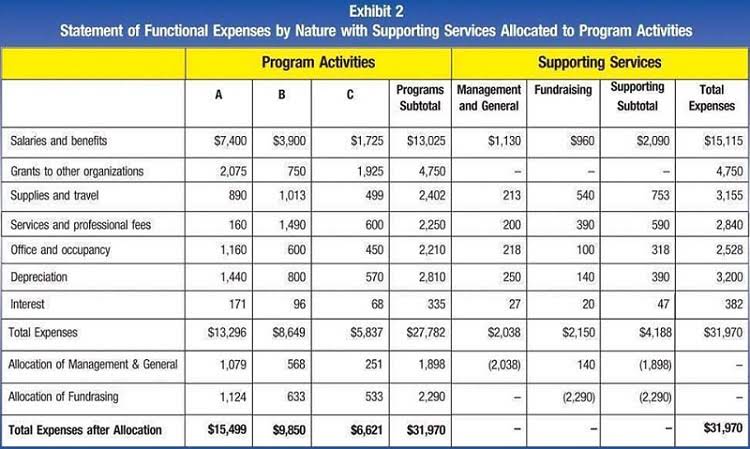
To avoid accounting errors, use bookkeeping best practices and always double-check your work. Making changes to financial data after the close date could result in future problems for reconciling your books and generating accurate financial statements. At the least, posting a new transaction after the closing date requires you to repeat the closing process again. Entry reversal throws off the accuracy of your books and financial statements.
- This process involves thorough scrutiny of financial records, such as double-entry accounting systems and ledger entries, to pinpoint any discrepancies that may indicate transposition errors.
- Entry reversal throws off the accuracy of your books and financial statements.
- Transposition errors are defined as simple clerical mistakes where the positions of two adjacent digits are switched.
- Instead, such repair should have been treated as revenue expenditure and record as repair expense in the profit and loss account.
- Using the information in the accounting software, it’s possible to know what the balances should be, and any mismatches will point in the direction of the error.
- Similarly, the number 72 is entered as 27, which is a difference of 45, which is also evenly divisible by 9.
What are Overhead Costs: Definition, Types, and Examples
An example of a principle error is buying a piece of equipment and miscategorizing the expense as a sale instead of a purchase. This can throw your books out of balance, compromise the accuracy of your financial statements, and, if not caught, affect your tax liability. Duplication errors can have a substantial impact on your accounting system or any outcome, depending on what entry was duplicated. It’s possible to duplicate anything from credit or debits on a purchase order to paychecks. In banking, a retained earnings transposition error can result in funds being transferred to the wrong account, which may cause delays, financial losses, or even legal consequences.
- And although the aforementioned mistakes are typically easily remedied, in some cases, transposition errors relating to medicinal dosing information may lead to tragic consequences.
- Correcting entries are part of the accrual accounting system, which uses double-entry bookkeeping.
- By the end of this article, you will have a solid understanding of transposition errors and be equipped with the knowledge to prevent and address them effectively.
- By understanding the nature of these errors, recognizing their potential impact, and implementing robust prevention strategies, we can safeguard against the pitfalls of inaccurate financial data.
- Generally, businesses prepare trial balances at the end of each reporting period.
- This can be done using thorough bookkeeping audits and using proper checks and balances to prevent such errors.
Compensating Errors
While transposition errors are common during manual bookkeeping, they can be easily identified and corrected through systematic review and mathematical checks. Identifying and correcting transposition errors is essential for maintaining the integrity of accounting records. By adopting these practices, businesses and professionals can minimize the occurrence of transposition errors and ensure the accuracy and integrity of their work. In the realm of data entry and analysis, transposition errors can lead to flawed conclusions or erroneous insights. To mitigate these errors, data entry personnel should adopt a systematic approach, double-checking entered data against the original source. Employing data validation techniques, such as range checks or data profiling, can further enhance error identification.
Transposition Error in Accounting: Definition, Causes, and Fixing

An example of a principle error might be buying a piece of equipment and miscategorizing the expense as a sale instead of a purchase. Such a snafu could wreak havoc on your checks and balances when it comes time to reconcile your financial statements. I record the following correcting journal entry to decrease both the utilities expense and accounts payable by $45. By carefully reviewing each entry for potential errors, discrepancies can be identified and rectified before they impact the overall financial health of the organization. These errors, often stemming from manual data entry or computational missteps, can lead to misreported figures, misallocations, and misclassifications. Consequently, the reliability and transparency of financial reporting may be compromised.
- Since this number is evenly divisible by 9 (there is no remainder), it is a transposition error.
- Inaccurate financial records can result in misinformed strategic planning and forecasting, potentially leading to detrimental outcomes for the organization.
- These errors create inaccuracies in the trial balance and misrepresent financial statements.
- A transposition error can occur in any industry where data received in one form must be re-entered into another.
- This can lead to slight inaccuracies in calculations, especially when the error accumulates over multiple operations.
Correcting Transposition Errors: A Systematic Approach
Accurate financial data is the cornerstone of informed decision-making and regulatory compliance. A Transposition Error occurs when the digits of a number are reversed or swapped. These errors are often unintentional and can occur during manual what is a transposition error data entry or when transferring information between systems. Once identified, rectifying these errors involves adjusting the misreported figures and reconciling the affected accounts to ensure the accuracy of the trial balance. These efforts are essential for providing reliable financial information that supports informed decision-making and fosters confidence in the organization’s financial activities.
These errors often result from inadvertently swapping digits when recording numerical data, such as in accounting or Outsource Invoicing financial reports. The repercussions of such errors can potentially misrepresent the financial health of an entity, affecting its ability to make informed strategic decisions. Learn about the definition, causes, and consequences of transposition errors in finance.

When it comes time to balance the books, your assets include an additional amount that doesn’t exist and your liabilities are short an expense. The potential impact of transposition errors varies depending on the entry, but they could result in a loss of funds for your business. In trading, particularly high-frequency and algorithmic trading, precision is crucial.

How do I detect a transposition error in my books?
It’s one of the most common and easily overlooked errors in accounting, bookkeeping, and spreadsheets. Operationally, transposition errors can lead to inefficiencies such as inaccurate inventory management, flawed budgeting, or payroll miscalculations. Enerpize offers a comprehensive cloud accounting solution designed to automate and simplify financial management and minimize errors like transposition mistakes. Its user-friendly interface ensures that you can easily track and manage your cash flow, income, and expenses from anywhere, reducing the likelihood of manual entry errors.
